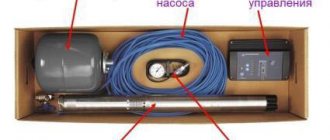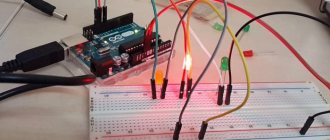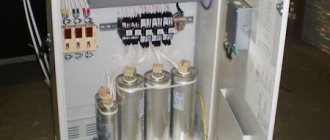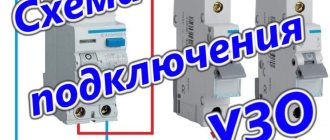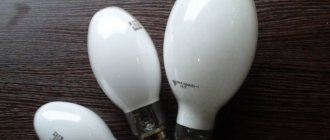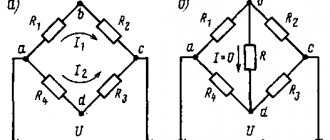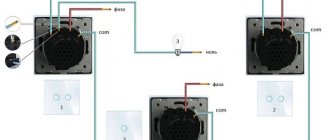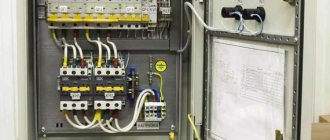Installing a water heater will provide owners of country houses with hot water and will increase the comfort of apartments from the old housing stock such as Khrushchev-era buildings and small-family dormitories. The tireless unit will diligently prepare and supply water to the taps so that the owners can enjoy the benefits of civilization.
This will happen if the diagrams for connecting the water heater to the water supply were followed exactly, don’t you agree? You will find complete answers to a wide range of questions that arise before installing water heaters and in the process of connecting them to the communication network on our website.
Reliable information will be useful to independent craftsmen who want to carry out the installation themselves. It is also necessary for customers of plumbing services to check the quality of the work.
The article describes in detail the types of water heaters, indicates their design differences, and indicates the specifics of the connection. Valuable tips are provided to ensure perfect operation of the equipment after installation. The information content of the proposed material is perfectly complemented by photographs and video recommendations.
Types of household water heaters
Features of connecting household heaters are directly related to the types of devices, their technical parameters, and overall dimensions.
Traditionally, two types of heaters are used in household practice:
- Cumulative.
- Flow-through.
Both types of boiler systems differ from each other in heating technology.
A storage type device equipped with an electric heater (TEN). Such equipment is most often used in the domestic sphere. Can be mounted directly in the bathroom if overall dimensions allow
With storage heaters, cold water is collected in a container, heated and then discharged for tapping.
With flow-through units, heating is carried out directly during the flow of cold water in contact with the heater, without collecting liquid in a storage tank.
Household consumers mainly use storage boiler systems. A comparative review of both types of water heaters is given in this article.
Technical device of the storage boiler
A storage-type water heating system, boilers, in a simplified schematic form is a container equipped with electric heating elements or liquid heat exchangers. The storage vessel has pipe lines for cold water supply and hot water outlet.
A more powerful and voluminous design is an indirect heating installation. It is clear that the source of heating energy in this case is water coming from the heating system. However, if desired, it is possible to connect electric heating
The designs of indirect heating boilers are additionally equipped with a working coolant area and heating connection lines.
Any modern system, regardless of its design features, is equipped with automation, thanks to which the water heating temperature and the operation of the system as a whole are regulated.
Structural design of heating devices
There are designs of storage boilers designed for installation vertically (wall-mounted) and horizontally (floor-mounted). Of course, each individual case of using certain boilers has its own installation features.
So, if it is planned to install a water heating device on a wall, a preliminary calculation of the load and comparison of the results obtained with the design parameters of the wall of the room on which the device is to be mounted is necessary.
Instantaneous water heaters have been rapidly gaining popularity lately. Users are attracted by their small dimensions and the possibility of simplified, easy installation. Really convenient devices for low water consumption needs
Installing equipment without load calculations threatens to result in a fatal installation error, when a filled boiler can simply collapse along with the flimsy partition on which it was mounted.
According to the equipment instructions, the load must be calculated taking into account four times the weight of the boiler system.
Therefore, if the structure of the supporting wall is frankly weak, the water heater circuit must be supplemented not only with connection lines to the water supply and coolant, but also with reinforced racks - through fasteners.
Horizontal boiler installation used for local hot water supply. Electric heating is also provided here and in this installation option an expansion tank is installed, which is the right solution
In classic connection diagrams for wall-mounted boilers, the water supply/discharge pipes of heating devices are marked with the appropriate color - blue/red.
What is affected by the material of the device tank?
water-pomp.com.ua
The first thing that determines the price of such equipment is the material of the water tank. Let's look at all the types in detail:
- Stainless steel. If you use this option, you will also need to install a magnesium anode (a rod that prevents scale from forming inside the system; requires constant replacement). It is most widespread among the model range: both expensive and cheaper. Everything will depend on the design of the device.
- Enameled walls. The main advantage of the format is no harmful effect on water and a lower price. As in the previous version, a magnesium rod is required.
- Glass porcelain is somewhat similar in characteristics to enamel. It differs in that it does not need an anode at all and does not crack when maintaining a high temperature in the system for a long time.
Installation diagrams and solutions
You can connect a heating device to the centralized supply in one of two ways: through a security group or directly.
A security group consists of a collection of the following elements:
- shut-off valve;
- Check Valve;
- safety valve;
- expansion vessel.
Option number 1 . The presence of a safety group is traditionally used in indirect heating boiler installations, as well as when the pressure of the centralized system is higher than the limit parameter of the boiler operating pressure.
Classic scheme of indirect heating equipment. Two safety groups are used: 1 – boiler safety group; 2 – expansion vessel; 3 – boiler tank safety group; 6 – heating circulation pump; 7 – boiler circulation pump (+)
Option number 2 . Direct connection is usually applicable to small-capacity equipment with a flow-through operating principle. Direct connection is also allowed in conditions of lower and stable pressures of the centralized water supply. In any case, the installation diagram involves the installation of shut-off valves.
In order to be able to maintain and repair water heating equipment, it is equipped with shut-off valves at the inlet and outlet of the system (+)
Preparation
If you have not previously installed a boiler, then first of all decide on its future location, then select tools and materials.
Selecting a location
When searching, follow these guidelines:
- The wall must be strong, preferably load-bearing, in order to support the large weight of the tank (add the weight of the water to the weight of the device).
- Free access to communications and to the device is important, since the water heater will have to be serviced in the future.
- Do not connect the boiler to bad wiring. Typically, the power of models is from 3 kW.
- Do not connect the tank to rotten or rusty pipes.
- Choose a place closer to the pipeline so that you don’t have to cut into the system from the next room.
- An acceptable choice for installation is a bathroom or kitchen, less often a toilet or hallway.
It's actually not that complicated. Regular high-quality wiring will easily withstand an average power electric heater. There are no installation requirements or restrictions for this device.
We still recommend running a separate line from the meter to the tank to relieve the burden on the main wiring.
Tools
Tools and materials needed to install the boiler.
If you do everything from scratch, you will have to work hard. First, cut into the pipeline with cold water, make the wiring for hot water, and only then start connecting the indirect heating boiler. You will also need special tools and materials:
- metal-plastic pipes;
- tow;
- paste;
- sealing tape;
- flexible hoses for connecting the boiler and water supply;
- tees;
- Ball Valves;
- check valve;
- hammer drill (a drill is recommended only for lovers of masochism, since you will have to drill fairly deep holes in a strong concrete wall);
- roulette;
- level;
- screwdriver;
- gas or adjustable wrench;
- a set of regular keys.
Criteria for error-free installation of equipment
Among the main installation points that you should pay attention to in order not to make mistakes are the correspondence of the diameters of the pipelines in relation to the inlet fittings, as well as the cross-section of the cable supplying the electric heater of the boiler.
The diameter of the supply pipes must ensure free flow of water along the inlet/outlet lines. Therefore, a larger diameter of hoses with a transition to the size of the fittings is still acceptable, but a cross-section of pipelines that is smaller than the inlet pipes of the boiler seems to be a gross mistake.
A clear example of equipping an electric heating boiler installation with all the necessary fittings. It should also be noted here that the insulation of all incoming and outgoing lines was performed with high quality (flawlessly)
The cross-section of the power cable shows a similar picture. It is not prohibited to use a cable with a larger cross-section, but it is strictly prohibited to use a cable with a smaller cross-section.
True, a cable with a larger cross-section than the norm creates difficulties when laying in channels and takes up more free space. Here it seems logical to precisely select the wire cross-section depending on the load current.
The power socket is usually mounted directly next to the device. The installation height of the socket from the floor level is not less than 1.5 m. Household boilers are designed for power supply with single-phase alternating current 220-250 W. The current load is usually at least 10 A.
Connecting the boiler system according to the electrical diagram. This connection option can be considered made without error. The wire cross-section corresponds to that specified in the documentation, the grounding circuit is present
The exact value is determined by the performance of the heater and is indicated in the technical documentation. It is for the specified current value that the circuit breaker must be selected.
For example, for flow-through heaters, the following current cut-off standards for automatic machines are relevant (table):
| Boiler power (flow circuit), kW | Circuit breaker current, A |
| 3,5 | 20 |
| 5,5 | 25 |
| 6,5 | 30 |
As a rule, all required connection parameters are specified in the instructions for the boiler. The user manual explains exactly all aspects of installation. Therefore, it is recommended that you carefully study the documents included with the device before installation.
Security
To connect powerful models of storage-type water heaters to the electrical network, craftsmen use a reinforced cable with three cores, which is laid directly from the distribution board. Installation of a double circuit breaker or RCD and grounding are required.
Connection to the electrical network Source otopleniesam.ru
Some features of the water supply scheme
Connecting a storage boiler . Cold water is supplied to the boiler system through a pipeline that is connected directly to the centralized supply riser.
In this case, a number of components necessary for the normal functioning of the equipment are installed on the cold water line:
- Stopcock.
- Filter (not always).
- Safety valve.
- Drain tap.
The indicated circuit elements are installed in the area between the cold water supply pipe and the boiler in the marked sequence.
The line for the outlet of heated liquid is also equipped with a shut-off valve by default. However, this requirement is not mandatory and if a tap is not installed at the DHW outlet, a serious mistake is not seen in this.
All water heater connection diagrams have common features. The cold water supply point is located at the bottom; filters and a reducer must be installed in front of it to reduce the flow pressure (+)
Connecting an instantaneous water heater . Compared to a storage boiler, the work is carried out according to a simplified scheme. Here it is enough to install only one shut-off valve in front of the cold water inlet fitting.
But the installation of a shut-off valve at the DHW outlet of a flow-through heater is considered by many manufacturers to be a gross installation error.
You should also take into account: if the source of cold water supply for an instantaneous water heater is a well, a well, a water tower, etc., it is recommended to turn on a coarse filter in series with the tap (after the tap).
Often, an installation error with connecting the filter or refusal to install it leads to loss of the manufacturer’s warranty.
Connection to water supply
The choice of one or another method of connecting the boiler to the water supply is determined by the material of the pipes and the layout of their installation throughout the house.
Polypropylene pipes
Connection to PP pipes is carried out using a special soldering iron and pipe cutter. For pipe routing, the master uses tees made of polypropylene, and the tap is installed using an MPH coupling.
Connecting a water heater to PP pipes Source remontstroy.net
The connection itself with external wiring does not create any difficulties. If the pipes are hidden under decorative panels, before connecting the boiler, the technician opens the casing layer.
Common mistakes in installing water heaters
The rules for installing such equipment provide for the use of insulation on cold water/hot water supply pipelines. In this case, the technical requirements for installation determine the minimum possible size of insulation thickness - 20 mm.
The level of thermal conductivity of the insulating material must be at least – 0.035 W/m2.
An example of insulating a heater system where obvious errors are noted. It is necessary to insulate not only the pipes, but also the operating components installed on the pipeline section. This is easy to do with modern insulating materials.
When installing water heaters, they often violate the connection diagram of the home unit to the water supply, using thin insulating material, or not using insulation at all.
As a result, when full operation of the device begins, significant losses of thermal energy are noted. These losses are reflected in the heating time, which increases significantly.
Improper or missing insulation is the main cause of condensation on the cold water line. This state of the system reduces the level of user comfort and contributes to the formation of an unsanitary environment inside the premises where the equipment is located.
A common mistake is to install a boiler without an expansion vessel. The scheme, which provides for the introduction of an expansion vessel, is relevant specifically for storage-type water heaters.
Thanks to the expansion vessel, it is possible to compensate for the increase in pressure caused by the increase in the volume of water in the boiler storage tank.
Installed expansion tank in the indirect heating system. In fact, the installation of the expansion vessel was carried out with an error. This element of the system must be located above the line of the top cover of the boiler. In addition, there is no pipe insulation
As a rule, the installation of storage type heaters is limited to the inclusion of a safety valve in the cold water main section. This kind of replacement of the expansion tank with a safety valve is acceptable, but, from the point of view of proper installation, this is a technical error.
In fact, on storage boilers you should always install an expansion vessel along with a check valve.
List of other installation errors:
- the electrical cable is laid on sharp metal edges or on high-temperature surfaces;
- the order of connecting the main lines does not correspond to the order indicated on the diagram;
- the level of installation of the water heater relative to the horizontal and vertical is violated;
- there is no grounding circuit for the water heating device;
- the parameters of the electrical network to which the equipment is connected do not meet the passport requirements;
- installation is carried out in a room where there is no water supply and drainage system.
Any, even insignificant, error in installing water heating equipment can play a fatal role after the device starts operating.
We invite you to familiarize yourself with detailed instructions for installing a storage and instantaneous water heater:
- Do-it-yourself storage water heater installation: step-by-step guide + technical standards
- Do-it-yourself instantaneous water heater installation: step-by-step instructions
Connecting the storage heater
When installing a storage water heater, the technician must use a non-return safety valve, which ensures the correct functioning of the device and reduces the risk of unforeseen situations.
Mounted safety valve Source hi.decorexpro.com
How to work with different types of pipelines
Not so long ago, the question of what to make a water supply from practically did not exist. There have always been metal pipes of various types for this purpose.
And for faster, high-quality installation, additional parts were used - fittings to connect various pipeline elements into a single workable system. They have always been divided into threaded and welded.
Installation of metal pipeline systems
Metal water supply networks can be made of two main materials - steel or copper. Cases of installation from other types can be considered exotic.
The main connection method for steel pipes is threaded and welded. To eliminate the use of thread-cutting tools, in some cases welded threaded ends are used. The main assembly, including for pipelines of complex configurations, is carried out using fittings.
This type of connection in pipelines, such as flange, is practically not used for heating and hot water supply systems in country houses and apartments.
If it is necessary to make bends, it must be taken into account that its minimum radius for steel pipes is 2.5 times the pipe diameter. For bending at home, you can use manual mechanical or hydraulic pipe benders.
Copper pipes are installed in the same way as steel pipes. The difference lies in the connection method. Copper parts are mounted by soldering.
In this case, the ends of the pipes are often flared to ensure a reliable connection. This technological operation is possible due to the high ductility of the metal.
Connection using threaded fittings is also used. In this case, flaring of the ends is also used, but it is done at an angle of about 45 degrees.
The advantage of copper water pipes is:
- Resistance to hydraulic shocks;
- No lime deposits on the inner surface of the pipe walls.
- Durability – service life is up to 50 years.
The disadvantages include the high cost of materials.
Installation of polypropylene pipelines
Polypropylene, as an alternative material for installing water supply and heating systems, appeared several decades ago and immediately became a popular substitute for metal pipes. This became possible due to ease of installation, low weight, simplifying delivery, and long service life.
A special feature of the manufacturing material is its resistance to bending, so installation is carried out strictly along straight lines. Fittings made of the same material are used for connections.
Threaded fittings have also been developed and are used, the main application of which is to use them at the transition points from a metal pipeline to a polypropylene one, for example, when installing pipeline elements with metal casings. These can be taps, plugs, monitoring and control devices, and so on.
When using polypropylene as the main material in heating networks and hot water supply systems, it should be taken into account that the maximum temperature it can withstand without consequences is no more than 90 degrees.
This is quite enough to heat any room. When polypropylene pipes are used in extreme conditions in heating and hot water supply, their durability is about 20 years; in low-temperature water supply systems it can reach 50 years.
The connection of polypropylene pipeline elements is made by soldering. A special soldering iron is used for this.
For pipes of various diameters, the heating time in the soldering iron is from 5 to 10 seconds. It is necessary to hold the joint motionless when connecting for 15-20 seconds.
Soldering installation is carried out on a workbench, while individual network links are assembled and installed into the system “by hand”. This is less convenient and you need to use the services of an assistant.
This installation procedure excludes the installation of closed heating networks - if leaks occur, the wall will have to be destroyed.
Installation of metal-plastic systems
The use of an aluminum layer in the wall of a water pipe for both cold and hot water is caused by the need to protect the metal parts of the system from oxidation.
Oxygen from the air is able to penetrate plastic in atomic form and dissolve in water. At the same time, it acquires aggressive properties and actively oxidizes the metal, promoting failure.
To protect against this, aluminum foil is used, which is applied to the workpiece along the adhesive layer. The material is applied in a spiral, the joint is welded with a laser.
A second adhesive layer and an outer layer of plastic are applied on top of the foil. This creates an obstacle to the penetration of aggressive substances, and the method is called oxygen protection.
The installation of metal-plastic pipes differs from that described above only in the need to strip the metal layer before soldering. A special device is used for this.
The physical properties of metal-plastic pipes allow the use of bends during the installation process. This allows you to create seamless sections of water supply, in which connections are made only at the exit from the channel, hidden in the wall or floor.
This method is widely used when installing heated floors and hidden plumbing. For this reason, metal-plastic pipes are produced in coils up to 600 meters long.
Application of check valve
This mechanism belongs to the safe operation system.
Its use on a pressure device is necessary. When heated, the water in the boiler noticeably increases its volume, resulting in an increase in pressure in the vessel. The extreme manifestation of this process is its rupture. As a result, the room is filled with steam and hot water, which can cause significant harm to people.
When critical values are reached, the valve installed on the boiler opens the spring damper to discharge water, which is discharged through the fitting. To dispose of it, a hose is installed on the fitting and connected to the nearest discharge into the sewerage water supply. It must be securely fastened, since the discharge can be carried out with great pressure. After releasing excess water, the spring valve closes.
The valve also has a lever for releasing water, which can be used manually.



